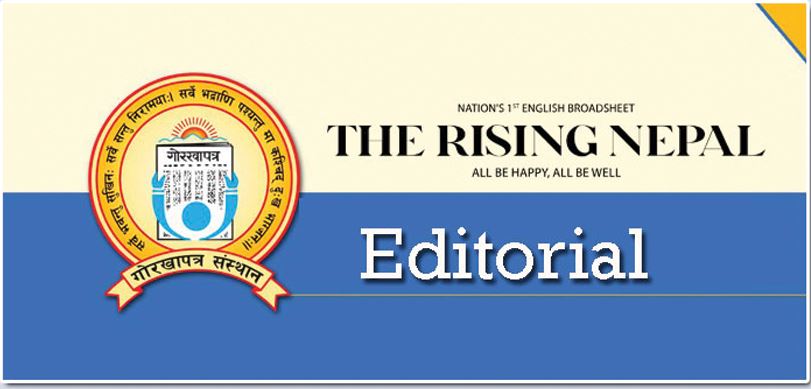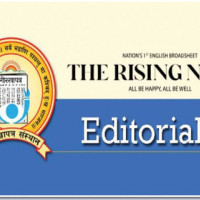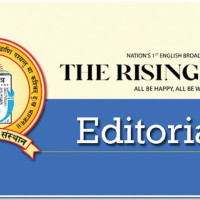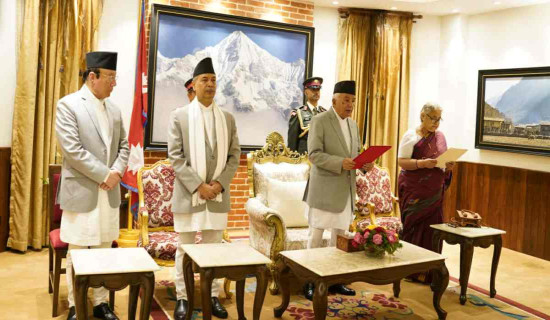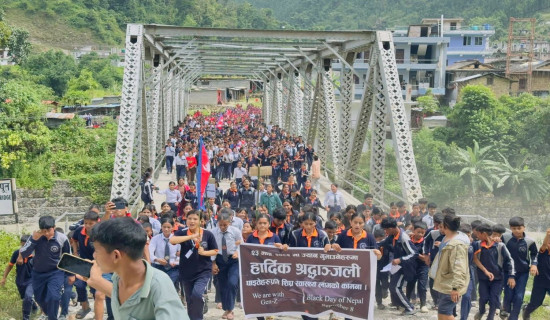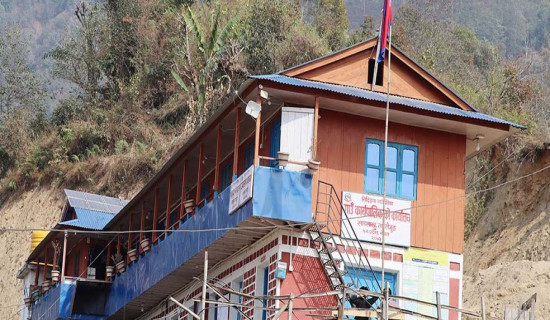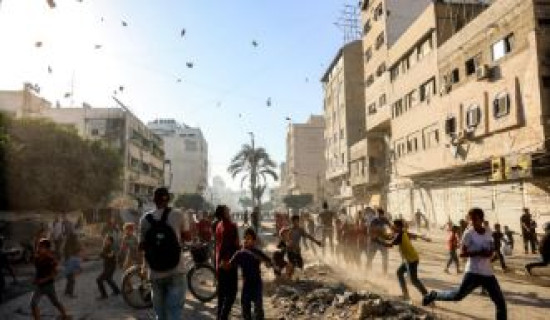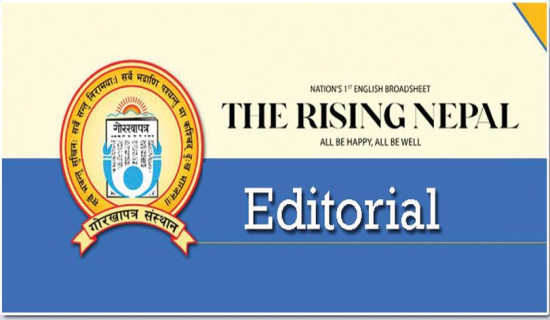- Saturday, 13 September 2025
Readiness For Disaster
Though the meteorologists have predicted less than average monsoon rainfall for this year, the eastern region of the nation has already witnessed devastations caused by incessant rains. About two dozen people have died so far and more then two dozen others have gone missing. More reports of property damage and threats posed by landslides, floods and erosion are coming in. People, especially those residing on the banks of rivers have been asked to stay on alert and move to safety in the event of extreme rains that often occur in some pockets without warning. The rain triggered calamities that occurred in eastern districts of Taplejung, Panchthar and Sankhuwasabha just after the arrival of the monsoon in the country show that it is not wise to stay complacent and unprepared about the potential rain disasters. In recent year, even the forecasts made by the weather experts have not proved to be very reliable and this has been attributed to the changing dynamics of the monsoon wind due to rising temperatures and climate change. Therefore, staying well prepared to cope with monsoon disasters is the best policy the nation can adopt.
In order to deal with the natural disaster related issues including the monsoon-triggered landslides, flash floods and inundation, necessary preparations, plans and executions are made chiefly by the National Council for Disaster Risk Reduction and Management Authority (NDRRMA) which undertakes timely operations including search, rescue, relocation and rehabilitation works. The authority is also responsible for providing necessary relief aid to the concerned victims with the urgent supplies of food, clean water and medical treatment. But all this requires advanced preparations, logistical availability and the dedication of the personnel and volunteers assigned for the disaster missions.
It is in this context that Prime Minister Pushpa Kamal Dahal Prachanda has stressed the dedication and hard work of the staffers involved in the search, rescue and relief missions so that they can provide timely, prompt and reliable services to the needy people. The Prime Minister asked them to work in such a way that they are truly dedicated to the service of the people rather than acting as administrators. Addressing the eleventh meeting of the NDRRMA in the capital the other day, Prime Minister Prachanda emphasised the need to make logistical and training related preparations well before the monsoon season started. This directive should serve as a shot in the arm for the concerned personnel and also a warning against the lackadaisical tendency of springing into action only when things have turned from bad to worse.
Natural disasters triggered by monsoon rains are happening every year and the disaster preparedness should happen in a regular manner. When the concerned personnel start making preparations after the occurrence of a calamity, there is less chance of saving lives and properties. Citizens have to suffer more as a result of bad planning and preparations. Monsoon disasters have shown extreme nature in recent years which has been blamed on climate change. In this scenario, anti-disaster planning and preparations need to be made accordingly. We need to learn ample lessons from the cloudbursts and devastating flash floods that occurred in Melamchi area and Manang two years ago and the Hewakhola river tragedy in Sankhuwasabha this year. Making human settlements and powerhouses too near to the rivers need a rethinking for disaster safety. Installing early warning systems with use of modern technology can also help people get to safety on time and save precious lives.

